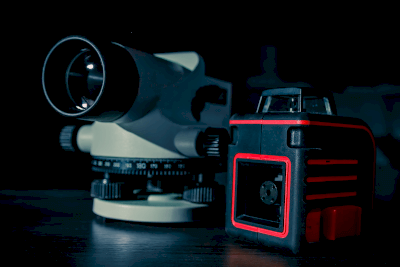What Is a Marking Laser?

A marking laser is a device that uses a laser beam to mark lines. It can accurately mark vertical and horizontal lines. This marking process is essential in construction sites to accurately install piping and various conductors. A laser beam simplifies finding the correct placement. It also enables checking that windows and floor surfaces are level. Sometimes a measuring tripod is used to hold it in place, and sometimes a detection receiver is used if the laser is difficult to see.
Uses of Marking Lasers
Marking lasers are mainly used on construction sites. They are used for marking out the correct location of piping and other work. In the past, markings were made on walls and columns using ink and chalk, but vertical and horizontal lines can be easily checked with a laser. This makes it possible to install piping in the exact location as shown on the drawings. Furthermore, it simplifies checking vertical and horizontal lines in large buildings, ensuring that columns, windows, floors, etc., are not distorted.
Principles of Marking Lasers
There are two main types of marking lasers, differentiated by their methods of generating vertical and horizontal lines. Here we introduce the principles and features of the two types.
- Gimbal type
- This method uses a pendulum-like mechanism called a gimbal. A pendulum is attached to the mechanism that emits the laser, which always points vertically downward due to gravity. The laser is emitted according to the vertical direction of the pendulum, and a horizontal laser is emitted perpendicular to this light. The simple structure of the pendulum makes it a low-cost marker. However, with the pendulum swings, it is impossible to emit an accurate laser beam while moving the pendulum. Therefore, it is unsuitable for use in high-rise areas of buildings, where there is a risk of horizontal swaying from wind or other factors.
- Electronic leveling type
- This method calculates the horizontal displacement of bubbles in a liquid. Instead of a pendulum, a liquid containing air bubbles is attached. The level is checked by utilizing the change in the position of the bubbles as the pendulum is tilted. Although the electronic leveling method is not easily broken and is suitable for construction sites, temperature and air pressure can cause the bubbles to change, resulting in errors.